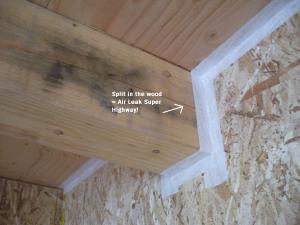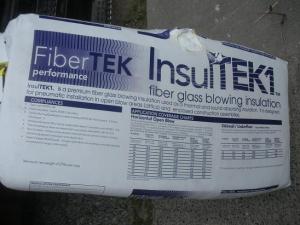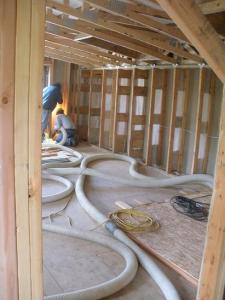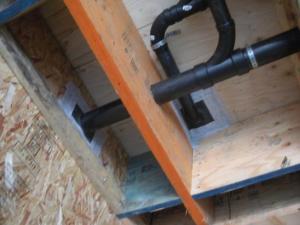Dan is actively sealing his house as well as getting past a few more milestones. Most of the stairs are in, the ventilation system is being piped in and sealed. Stu returned to make another appearance and Dan put him to work. Dan has sealed the doorway between the workshop and the utility room with OSB and tape. He installed a fan in the door and is using that to pressurize the house so he can go around and look for leaks. He will be gluing and taping the areas he finds and another official blower door test will be run. Dan has also promised a first hand report of his experience with the air tight sealing methods when he can get time to turn around twice.
A very interesting air leak showed up during the testing. In the ADU Dan has installed wooden beams. Because the structure changes at that point from the Larsen Trusses that had the structural support on the front cord to 2X walls with the support on the outside, the beams had to pass through the air tight layer of OSB. Dan sealed around each beam, but when the building was pressurized he discovered that splits in the wood acted like an Air Super Highway. He said you could just feel the wind racing through the cracks. He plans to fill the cracks with putty and sand them down since the beams are going to be left exposed. Stay tuned! -Linda
Read More














Recent Comments